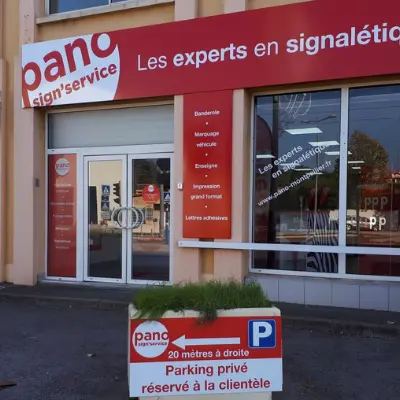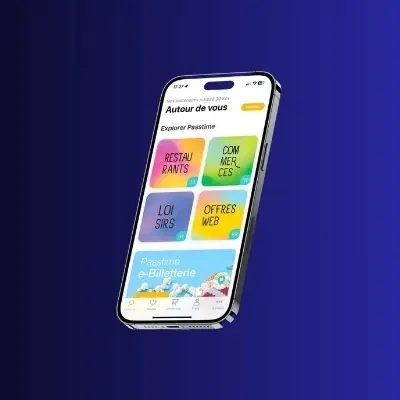Interview franchise WSI
WSI Internet Consulting & Education We Simplify the Internet, What are the main differences between the (North) American and European markets?
Ross Montagano - le
Rodolphe Hatchadourian : Once internet has been integrated into most gadgetry, what will its next development be?
Ross Montagano : Up to now, most computers have been used as end-terminals for information accessed through the net. The true capabilities and potential of an interconnected computer network, even in terms of raw processing power, are mind-boggling. Imagine what a network of fully interconnected humans, their mental abilities pooled and enhanced, will be like.
The reality is that the Internet has become an exclusive tool for literate (predominately English literates) for all intensive purposes. This is about to change as pod casts and more importantly video casts start to become the norm. In areas where Internet connectivity is not available it will be possible to utilize kiosks to dispense prerecorded lessons, which the student could then return their questions or test results to the kiosk for uploading to the professor. This adds value to the kiosk business model while providing a means for mass education very inexpensively. This use of technology might allow us to reach from the least educated (and most vulnerable) to just about every level of person who wants to improve their lives. The potential is that we could now in a very short timeframe (relatively speaking) educate a huge number of people, effectively providing them with the means to escape poverty.
There is one more technology that is sneaking up on us that may dramatically change the world – automatic language translation. If we take this technology and couple it with effect speech to text / text to speech technologies we now have a means to minimize the impact illiteracy has on the world's poorest segment of our population.
What are the main differences between the (North) American and European markets?
North American companies intent on broadening their e-commerce strategy to include serving customers in European markets (and vice versa) would be well advised to examine a number of noteworthy cultural, currency, language and regulatory differences between North American and European countries. An Internet business strategy is no different than a physical location presence in this respect – only the Internet allows for faster, more economical sales and delivery than bricks and mortar. It also allows far greater testing of approaches without the huge infrastructure investment. Some other key differences include:
#1: European consumer psychology
According to Colin Holcombe, in his 2004 article in Ecommerce Digest entitled "Ecommerce Statistics: Europe," European consumers generally have been slower to adopt e-commerce as a viable sales channel than their North American counterparts.
Additionally, no single market in Europe can match the size of the North American market, so European e-commerce strategies must be designed to target multiple, smaller, different markets to ultimately equal the size of North American models with their customary, singular focus.
#2: Online Payment Methods
In North America it is a commonly accepted practice to make quick, easy online payments using one's credit card number. However, this is not necessarily the case with European consumers, who have proven far less willing to approach the Internet with blind faith in its security and privacy. Their inhibitions with regard to online shopping combined with a variety of payment options that preclude users from entering account details onto a payment page, have caused European usage of e-commerce to trail that of North America for some time.
However, recent research on global Internet behavior, such as the World Internet Usage and Population Statistics study conducted in 2004 by InternetWorldStats.com, shows that e-commerce usage is definitely on the rise in the European Union. According to this report, European Internet usage was expected to grow 115 percent between 2000 and 2004. A variety of payment methods has organically developed among countries in the Union. Some commonly accepted forms of electronic payment in Europe include bank drafts, country-specific charge and direct debit payments, and mobile payments at kiosks and via short message service (SMS), as well as numerous other customer touch points. Clearly understanding these options and incorporating them into an e-commerce strategy can mean the difference between success in Europe and its unwelcome alternative.
#3: Taxation and legislation
In both North America and Europe, legislation ensures that the targeted consumer marketplace has a consistent way to view pertinent information about its purchases. Unfortunately, the responsible governing bodies failed to collaborate in establishing universal formats and rules for displaying this mandatory sales information to customers. Thus, one cannot assume that a U.S.-based e-commerce engine can simply be migrated to a new set of servers to support business activities in the European marketplace. The reality is that a vast array of website changes is required - some superficial and aesthetic and others absolutely mandatory - to ensure that the e-commerce launch is both successful and legal.
Fiscal representation is a concept that does not exist in the North American marketplace. It concerns the tax rate that must be applied to sales and is required of an enterprise that intends to sell to consumers rather than other businesses. There is no ambiguity in European law with respect to issues of taxation, and the law must be followed to the letter. Failure to adhere to regulations-and ignorance is no excuse-can result in expensive system fixes as well as the sad surprise of hefty legal costs.
Of course, there will always be companies that disregard the legally sanctioned business regulations, cast discretion to the wind and trade with European customers on their existing North American websites, in an attempt to skirt European tax disclosure and other important legal issues altogether. This unfortunate practice obviously displays profound cultural insensitivity to non-English speaking European customers. Therefore, companies intent on tapping European markets are strongly urged to create e-commerce sites with a consciousness of European laws and customs.
#4: Accommodating Multiple Languages and Currencies
Any enterprise intending to launch an e-commerce initiative in the European marketplace must overcome the challenges and complexities presented by multiple currencies and languages. While it is true that some customers in the smaller European countries may have resigned themselves to interaction with English-language websites exclusively, European customers largely expect to shop in their native languages. It is important to honor this expectation for the obvious benefits that accrue from customer goodwill. Also, it is simply not cost-effective for an enterprise to invest substantial sums in website development and maintenance, only to limit the scope of its e-commerce activities to a tiny handful of customers who are willing to struggle with the language obstacle.
In addition to using country-specific languages throughout the process of website development, it is vital to ensure that all back-end systems are fully equipped to handle multiple languages. Once the language issue is addressed and overcome, it still remains to address the currency challenge. It is imperative for an enterprise to have a plan in place to help its website cope with exchange rates and support multiple currency amounts prior to the launch of a European e-commerce effort. Without such a plan, the enterprise will risk missing the opportunity to serve a substantial portion of its market.
Interview by Rodolphe Hatchadourian
Pour ouvrir une franchise WSI il faut un apport personnel de 30 000 €. Vous souhaitez créer une entreprise dans le secteur Franchise communication
Votre projet de création s'oriente vers le secteur digital ?
Découvrez les meilleures franchises répérées par l'observatoire sur notre page dédiée à la franchise digital, mais également les chaines spécialisées sur la page franchise Franchise communication
Avez-vous apprécié cet article ?
En votant vous nous aidez à améliorer la qualité du contenu du site.







